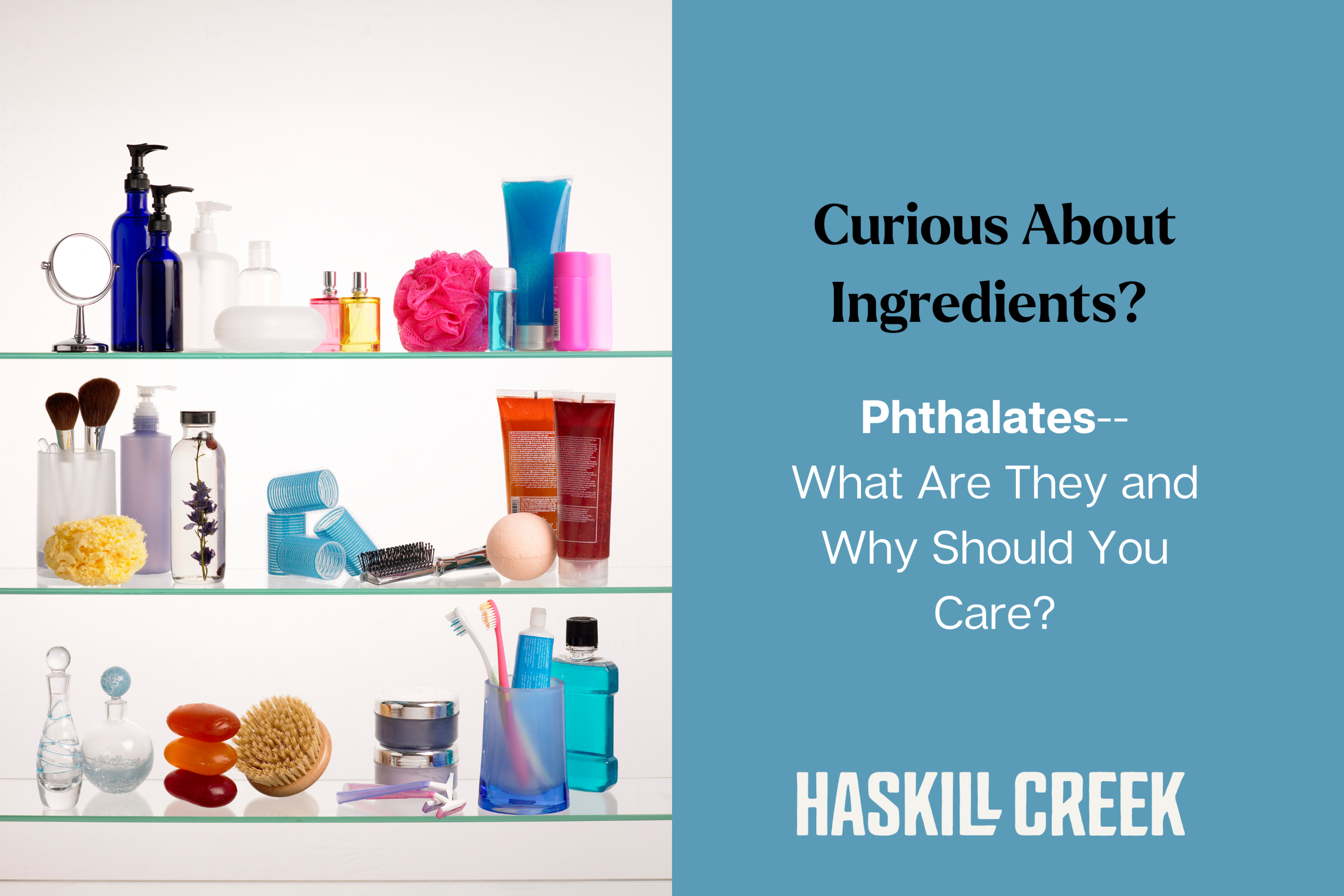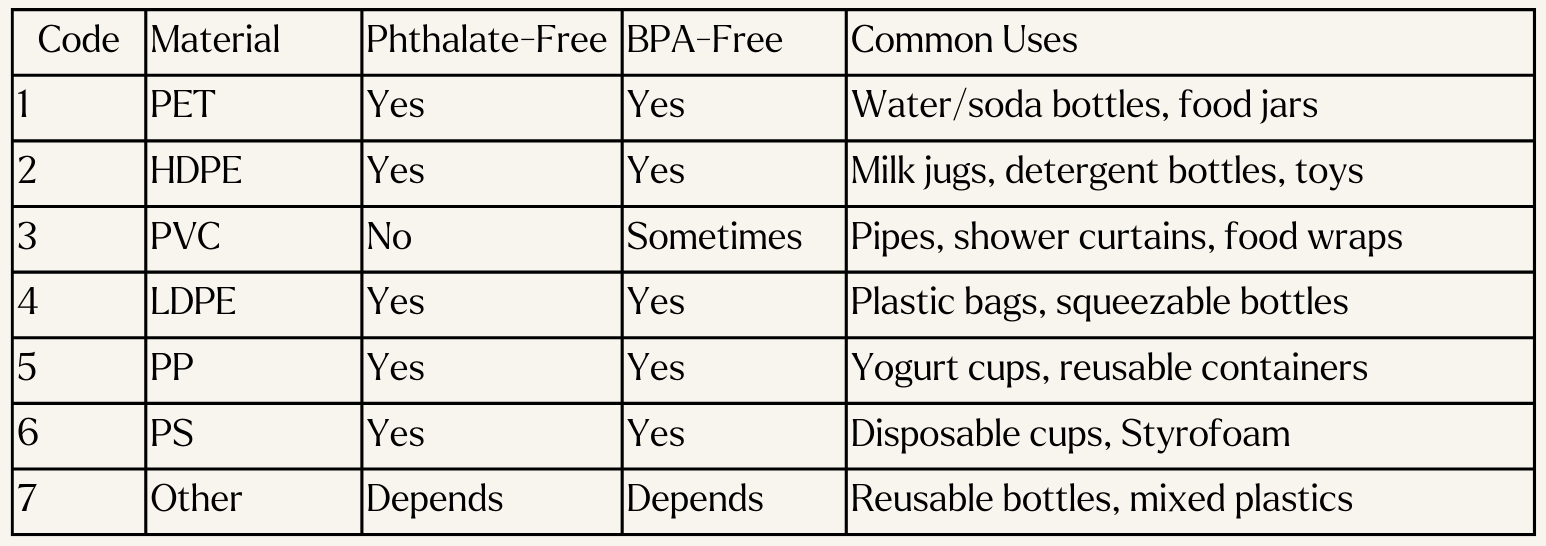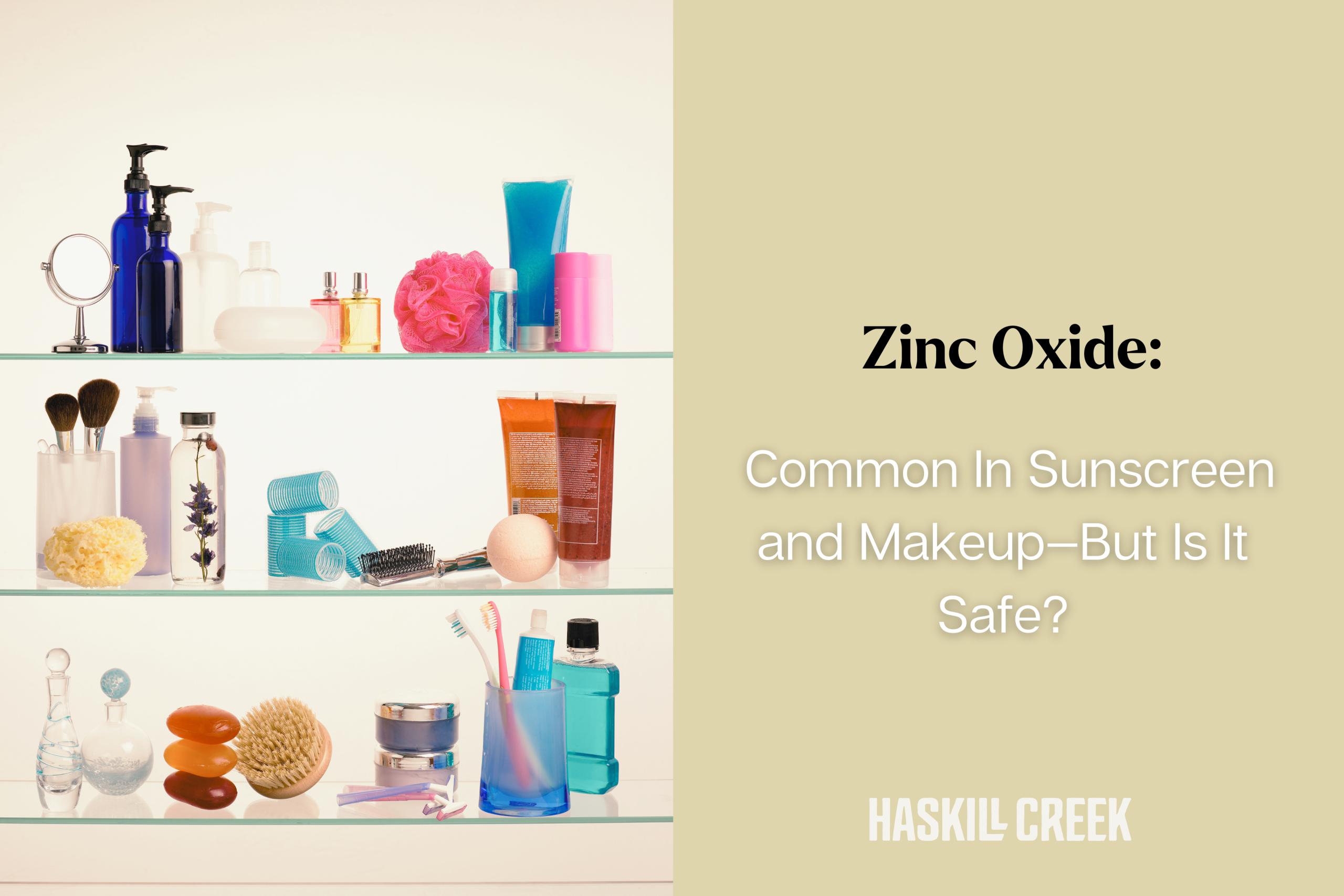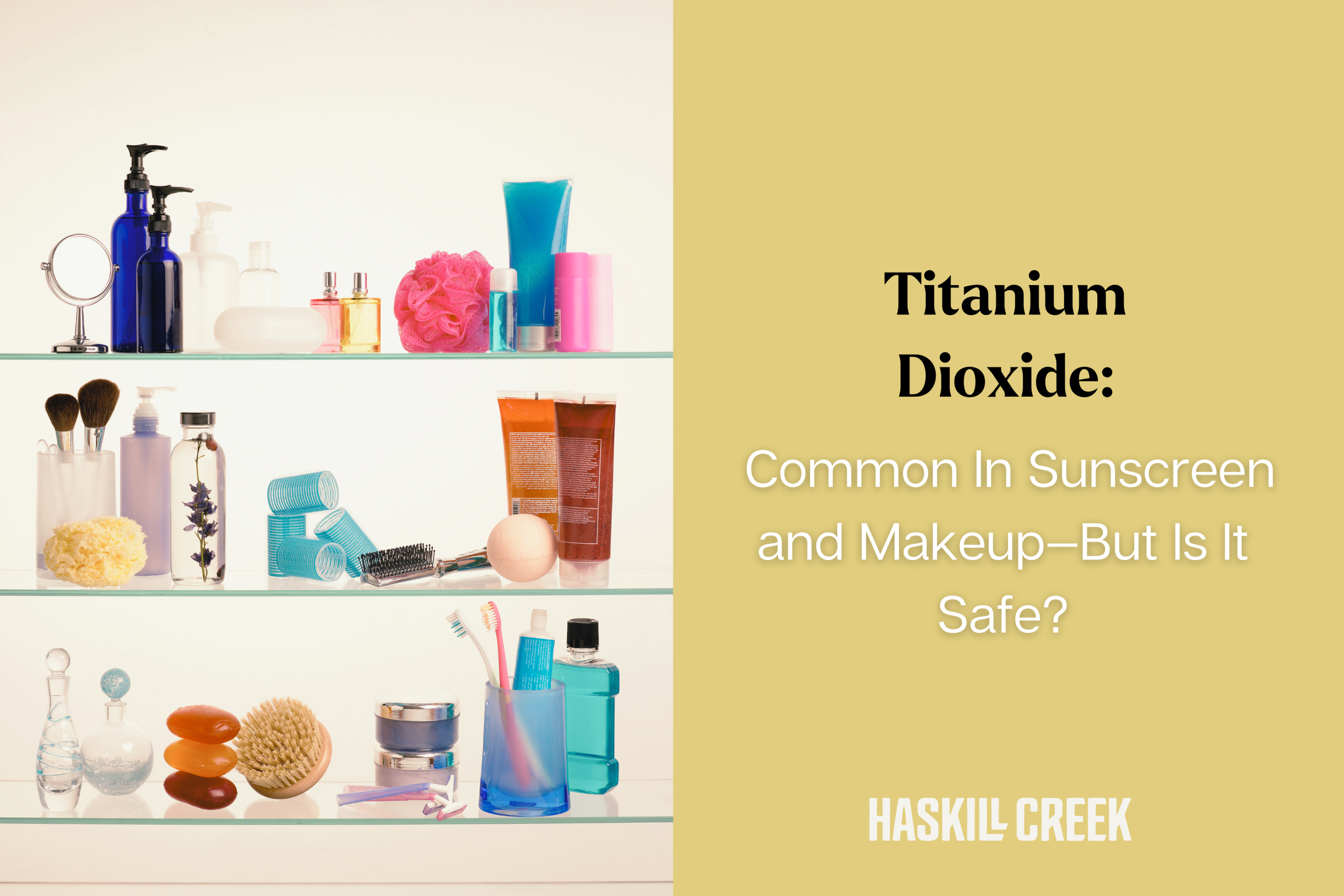Curious About Ingredients? Phthalates- What Are They and Why Should You Care?

If you’re reading this, it’s safe to say you care—or are at least curious—about the ingredients in the products you consume, put on your body, or use in your home. You probably already know that not all ingredients are created equal. Some are widely accepted as “safe,” while others fall squarely into the “toxic” category.
Here’s the thing: before starting Haskill Creek (and let me be honest, not really until starting this blog), I couldn’t confidently explain what many of these ingredients actually are. Sure, I could throw out labels like “phthalates—bad” or “potassium sorbate—good,” but ask me why? Crickets.
For instance:
-
Phthalates ? Toxic.
-
Potassium sorbate? Safe.
-
Methyl alcohol? Toxic.
-
Cetearyl alcohol? Safe.
Okay, great. But…what are they? Why do we like some and avoid others?
This post—and the series to follow—is my ongoing attempt to make sense of it all. While I’ll be your main guide, I’ll also be getting a little help from our amazing Haskill Creek team to ensure the research is thorough and the facts are solid. Together, we’ll break down a different ingredient each week—what it is, what it does, and why it’s either a friend or foe.
Got an ingredient you’re curious about? I’d love to hear from you! Drop us an email at Hello@haskillcreek, and I’ll do the research and share what I find. Let’s tackle the world of ingredients together, one label at a time.
THE LIST
Phthalates (Considered Toxic)
-
What It Is: Phthalates (pronounced THAL-ates), are chemicals found in many plastic, cosmetic and personal care products. They were created around 100 years ago to make plastics stronger and more flexible – which is why they’re called "plasticizers." These oily liquids are colorless, odorless, and don’t evaporate easily. They’re also not permanently fixed to the plastic, meaning they can release and contaminate other things over time..🔗
-
Various Names for It:
-
Diethyl Phthalate (DEP)
-
Hidden under “Fragrance” or “Parfum”
-
Dibutyl Phthalate (DBP)
-
Dimethyl Phthalate (DMP)
-
-
Where It’s Found (unless the product specifically says it is Phthalate Free):
-
Plastic Products: All plastic products
-
Fragrance/Parfum: Helps fragrances “stick” to your skin and last longer.
-
Lotions and Moisturizers: Keeps the ingredients blended evenly, preventing separation.
-
Hairspray: Helps prevent clumping and stickiness
-
Nail Polish: Helps the polish to bend with your nails
-
-
Why Toxic?
Some studies indicate that phthalates do pose significant adverse effects on the human body including hormone issues, obesity, allergies, asthma, and reproductive problems. Two types of phthalates, DEHP and DBP, are commonly found in food, dust, and air, with women and vulnerable groups at higher risk from unsafe exposure levels. 🔗
There are a number of ways that phthalates can potentially enter your body:
-
Absorbed through the skin: When you put a lotion on your skin, everything that is in that lotion also absorbs.
-
Inhalation: When you spray a fragrance or burn a candle tiny phthalate particles are released into the air that you breathe in.
-
Ingest: Since phthalates can easily separate from plastic, over time (e.g. a plastic toy) or when exposed to high heat (microwaving food), the phthalates essentially leach out of the product and get into the food you are eating or through hand to mouth contact.
-
Regulation Quirks: The good and bad news for cosmetic products is that under the authority of the Fair Packaging and Labeling Act (FPLA), the FDA requires an ingredient declaration sold at the retail level to consumers. However, regulations don’t require listing the specific ingredients in fragrances or flavors, so you can’t tell if phthalates are included in the “Fragrance/Parfum”. 🔗Read more about the fragrance conundrum here.
-
Cleaner Alternatives:
More good news, in that there are lots of phthalate free products in the market. Here are a few things to look for:-
“Phthalate Free” on the package
-
Choose unscented or scent from essential oils
-
Use caution when purchasing a product with “Parfum/Fragrance” on the label unless they can provide data showing they are phthalate free
-
-
How do I know if my plastic is phthalate free? Check the recycling code.

-
Haskill Product Favorites: Honestly….all our products are Phthalate free, so shop away!

Sign up for our newsletter!
Join to get the Haskill Newsletter and be the first to learn about new products, events, and other goings-on at Haskill Creek!









